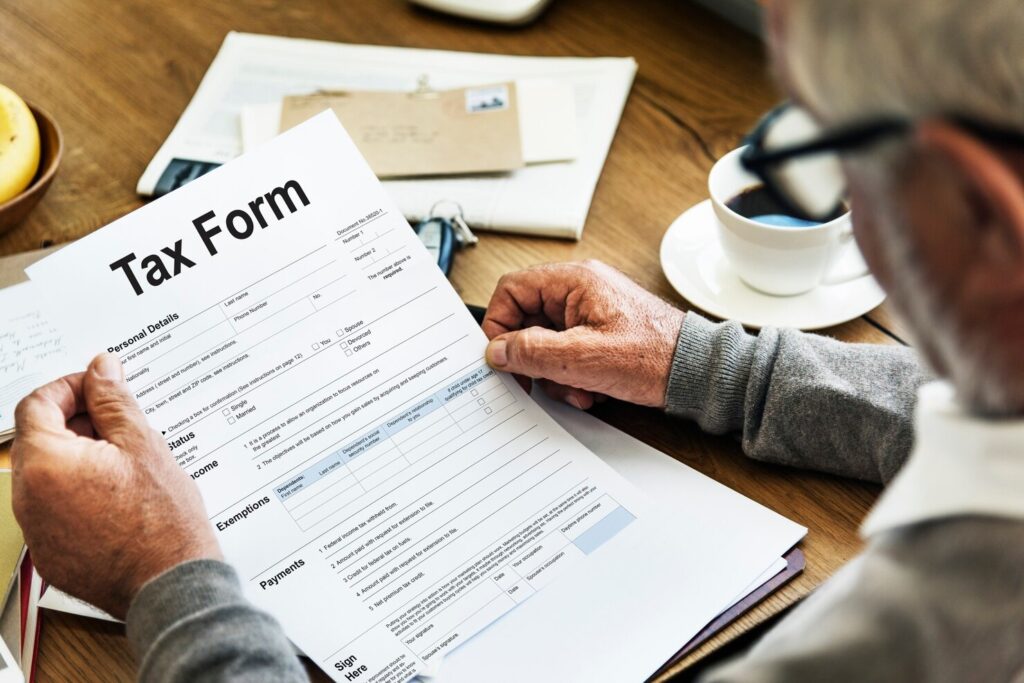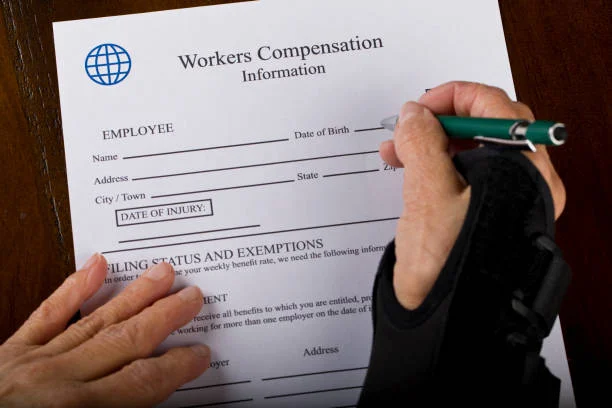LAW
What Are the Different Types of Federal Tax Forms?

Does the volume of federal tax forms baffle you, including which form you should file?
The world of taxes can be confusing, but sorting out which form fits your income is essential. From simple income reports to those more complicated deductions and credits, a host of forms can be used to help you declare your financial status.
Each has its own purpose and targets different taxpayers, be it a simple individual, self-employed, or business owner. Using the right form ensures that you are compliant and making the most of your tax benefits.
Read on to learn which forms apply to your situation and the most efficient way to fill them out.
What are Federal Tax Forms?

Federal tax forms are official forms on which you report your income to calculate the taxes owed and then claim tax credits or deductions. These forms are to be filed with the IRS, the U.S. government body that collects your taxes.
Moreover, with these forms, the IRS will be able to estimate how much you owe in tax or the refund due. These forms are required from individuals, businesses, and other entities to help ensure that your activities comply with the various U.S. tax laws and meet your tax responsibilities.
Some common types of federal tax forms are mentioned below:
1. Business Tax Forms
Each businessperson needs to be aware of the tax forms available that keep them in the good books of the Internal Revenue Service. You would file Form 1120 for your corporation, which C-corporations use in reporting their income and taxes.
If it’s an S-corporation, you will file Form 1120S and report income, deductions, and other associated details. If it is a partnership, you would be filing Form 1065, which is used when reporting the partnership’s income, deductions, gains, and losses.
Each partner would also receive a Schedule K-1 (Form 1065) showing their share of income, deductions, and credits. As an employer, you must file Form 941 to report payroll taxes such as Social Security and Medicare amounts withheld from employees’ pay.
You must also file Form 940 for unemployment taxes under the Federal Unemployment Tax Act. Furthermore, you may also be required to issue Form 1099, one series of forms used to report various types of income other than wages, salaries, and tips, showing payments made to independent contractors or interest dividend income.
Filing these forms properly is critical, as this will keep your business in good standing with the IRS and avoid any potential penalties. Remember due dates, and leverage professional services when necessary to ensure all of your tax filings are complete.
2. Payroll and Employment Forms
Understanding payroll and employment forms is important both for employers and employees.
- Form W-2: This form serves as an employer’s report of employee wages, including taxes withheld. If you are an employee, you will need it when you file your tax return. The W-2 form lists your total earnings and your federal income tax, Social Security, Medicare, and other deductions.
- Form W-4: You will use Form W-4 to determine how much federal income tax is withheld from your paycheck. Filing the form properly means you’ll have just about the proper amount of taxes deducted to help you avoid paying a large tax bill or, equally bad, spending too much when you file.
- Form 1099-NEC: This form reports non-employee compensation, for example, payments by clients to independent contractors or freelancers. Independent contractors are required to pay their own taxes, including self-employment taxes, whereas employers withhold taxes from employees who receive a W-2.
- Form 1099-MISC: The form shows miscellaneous income, such as rent payments or prizes, that does not fall under employee or contractor wages.
- Form 8959: It calculates the additional Medicare tax for high-income earners. If your income exceeds the threshold amount, you may have to pay this extra tax.
These forms are vital for tax compliance, ensuring accurate earnings and reporting of tax withholdings.
3. Miscellaneous Forms
Several miscellaneous forms have particular uses for your taxes.
Form 1098 shows mortgage interest paid on your home loan. If you are a homeowner, this form comes from your lender to help you claim any mortgage interest deductions on your return.
Form 2555 is crucial for U.S. citizens or residents with residence and employment abroad. The form allows you to exclude foreign-earned income from U.S. taxation in order to avoid double taxation of the same income. If you qualify, you could use this form to reduce your taxable income and minimize your overall tax burden.
Form 8880 is for the contributors to retirement accounts like IRA and 401(k). This form is used to claim the Retirement Savings Contributions Credit. That credit is a tax break for low- to moderate-income workers who save for retirement.
Form 5405 is for first-time homebuyers. If you buy your first home and you are eligible for the First-Time Homebuyer Credit, you will use this form to claim the credit for the year you purchased your home.
Last but not least, Form 5329 reports additional taxes on retirement plans, IRA 401(k) and other tax-favored accounts, including health savings accounts. You’ll need this form if you owe extra taxes for early withdrawals or other penalties.
4. Tax Credits, Deductions, and Special Forms

When it comes to tax credits, deductions, and special forms, there are several important ones to remember.
Form 8862 is for taxpayers who were previously denied by the Earned Income Tax Credit (EITC) and are now reapplying. You’ll need this form to prove your eligibility to receive the credit in future tax years.
If you claim education-related tax credits, Form 8863 is the one you’ll use to apply for credits like the American Opportunity Tax Credit (AOTC) or the Lifetime Learning Credit (LLC). These credits can reduce the cost of higher education.
Furthermore, if you have a Health Savings Account, attach Form 8889 to report your contributions, distributions, and deductions. This form will help you take full advantage of the tax benefits related to your HSA.
Besides this, if you contribute towards retirement savings, Form 8880 enables you to claim the Retirement Savings Contributions Credit, which provides a tax break for eligible savers. These forms help draw a roadmap through different tax benefits and maximize deductions and credits.
Conclusion
Federal income tax forms are confusing, but it can be far easier once you understand which form applies to your situation.
A business owner, self-employed individual, or a simple taxpayer needs the right form to comply with the laws and reap maximum benefits.
From simple income reporting to claiming deductions and credits, these forms are essential for accuracy and minimum tax liabilities in filings.
By being informed and organized, you’ll feel confident and take control of efficiently handling your taxes in a way that avoids any problems from the IRS.
Seek professional advice if you need it!
LAW
Stressthem: Mastering Server Resilience Before Traffic Peaks

Website performance is essential for business success in today’s digital age. Revenue loss, irate users, and reputational harm can arise from every second of downtime or delayed loading. IT teams and developers require a dependable solution for testing and enhancing server performance in order to keep ahead of possible issues. Stressthem is a state-of-the-art technology that helps businesses learn server resilience before traffic spikes, guaranteeing that websites stay secure, quick, and stable even in the most trying circumstances.
Beyond the page—related posts that reveal hidden stories waiting to be explored.
What is Stressthem?
With the help of stressthem, a sophisticated online stress testing tool, you can replicate actual website or web application traffic. Stressthem offers realistic simulations of user behavior, including various device types, geographical locations, and connection speeds, as contrast to standard load testing. The platform assists in detecting server flaws, bottlenecks, and possible failure spots before they affect actual users by simulating these circumstances.
Businesses can confidently manage periods of high traffic, such product launches, marketing campaigns, or seasonal spikes, thanks to this proactive strategy, all without sacrificing security or performance.
Key Features of Stressthem
- A Lifelike Traffic Simulation
You may get thousands of people to visit your website simultaneously by using stressthem. This enables you to assess how effectively your server handles large traffic levels and evaluate its response under duress.
- Adaptable Test Situations
The software enables you to design customized stress tests that mimic the normal user behavior on your website. Variables like device kind, location, click patterns, and session duration can all be defined. This degree of personalization guarantees precise and significant test outcomes.
- Comprehensive Reporting and Analytics
Stressthem offers thorough reports following every test, which include parameters for system stability, throughput rates, server issues, and response times. Developers and system administrators may swiftly discover performance problems and put effective fixes in place with the aid of these insights.
- Security and Vulnerability Insights
Performance problems often reveal hidden vulnerabilities in the system. By using stressthem, organizations can detect potential security risks and address them proactively, reducing the likelihood of exploits or downtime.
- User-Friendly Interface
Even for those who are not highly technical, stressthem offers an intuitive dashboard with step-by-step guidance. This makes stress testing accessible to a wider range of users, including business managers, webmasters, and IT teams.
Why Stressthem is Essential
Websites and applications face constant threats from sudden traffic spikes, DDoS attacks, or poorly optimized code. Without proper testing, these issues can lead to slow-loading pages, server crashes, and frustrated visitors. By implementing regular stress tests with stressthem, businesses can:
- Ensure fast loading speeds during peak traffic periods
- Improve server reliability and uptime
- Detect and fix vulnerabilities before they become critical
- Optimize resource allocation for better performance
- Increase user satisfaction and trust
Regular testing with stressthem not only improves website stability but also provides a competitive advantage, allowing organizations to handle growth without interruption.
How to Get Started with Stressthem
Starting with stressthem is straightforward:
- Create an Account – Sign up on the platform to access its full suite of testing tools.
- Set Target Servers or URLs – Choose which websites or applications you want to test.
- Customize Test Parameters – Configure the number of virtual users, duration, traffic patterns, and user behaviors.
- Run Tests and Analyze Results – Examine detailed analytics to identify bottlenecks, errors, and performance issues.
- Implement Improvements – Use the insights to optimize server performance, security, and user experience.
By following this process, organizations can anticipate high-traffic challenges, minimize downtime, and maintain high-quality performance for every user.
Conclusion
In an era where online presence determines business success, proactive performance testing is no longer optional — it’s essential. Stressthem empowers developers, IT teams, and businesses to master server resilience before traffic peaks, ensuring websites are fast, secure, and reliable at all times. With its realistic simulations, detailed analytics, and user-friendly interface, stressthem is the ultimate tool for anyone looking to optimize performance and safeguard their digital infrastructure.
Regular use of stressthem not only prevents downtime but also boosts user satisfaction, protects revenue, and enhances overall trust in your brand. In short, mastering server resilience with stressthem is the smart, proactive approach to thriving in today’s high-demand online environment.
Step into the unexpected—explore more content that challenges and inspires you.
LAW
What to Expect When Working with a Charlotte Bicycle Accident Lawyer on Your Claim

Bicycle accidents can be overwhelming and leave people feeling unsure about what steps to take next. Whether you were riding to work, exercising, or simply enjoying a weekend ride, a sudden crash can turn your life upside down. Physical injuries, medical expenses, and loss of income often create stress that can feel difficult to manage. This is when having a supportive advocate on your side becomes incredibly important. A Charlotte bicycle accident lawyer can help you understand your rights and guide you through the legal process while you focus on recovery.
After a serious accident, it’s normal to have questions about who is responsible for your damages, how your medical bills will be paid, or how you can recover compensation for time missed from work. Even a seemingly minor injury can become costly if it leads to ongoing care or complications later. By reaching out to a trusted Bicycle Accident Law Firm in North Carolina, victims can get clear answers and feel more confident in their decisions. This type of guidance can relieve some of the burden that often follows a crash and help you move forward.
Choosing an experienced bicycle accident law firm in Charlotte, NC who understands local laws can make a meaningful difference in how smoothly your claim progresses. Rosensteel Fleishman Car Accident & Injury Lawyers in Charlotte has built a reputation for focusing on personal injury and car accident cases with a personal, client-centered approach. If you’ve been hurt, contacting a Bicycle Accident Attorney Near Me is a smart way to ensure that you’re not handling the complexities of insurance companies and legal claims on your own. The team at Rosensteel Fleishman is available at 1-704-714-1450 for a free consultation to help you begin the process with confidence.
Unlock deeper insights – check out this related post you shouldn’t miss!
Understanding What a Charlotte Bicycle Accident Lawyer Can Do For You
Working with a Charlotte bicycle accident lawyer provides more than just legal representation. It gives you access to someone who understands how collisions involving cyclists are investigated, documented, and resolved in North Carolina. This knowledge is valuable because bicycle accidents often involve unique circumstances, such as shared road rules with vehicles, local ordinances, and issues like visibility or driver negligence. A professional attorney can assess the details of your case, explain your options, and guide you through each step so you do not feel alone.
One of the most important roles of a lawyer in this situation is to handle communication with insurance companies. After an accident, you may receive calls or letters asking for statements or pushing for quick settlements. Without guidance, it can be easy to accept an offer that doesn’t fully cover your expenses. An attorney experienced in bicycle accident claims will negotiate on your behalf to seek fair compensation for medical bills, lost wages, pain, and other damages. This allows you to focus on your recovery instead of paperwork and deadlines.
In addition to negotiating settlements, a Bicycle Accident Attorney in Charlotte, NC can represent you in court if necessary. While many claims are resolved without a trial, having an attorney prepared to litigate strengthens your case and signals to insurers that you are serious about obtaining fair compensation. This comprehensive support helps level the playing field between accident victims and large insurance companies, which often have teams of lawyers protecting their own interests.
Key Areas Where a Lawyer Provides Support
An attorney can assist with several critical aspects of your case, including gathering evidence such as police reports and witness statements, coordinating with medical professionals to document injuries, calculating damages for current and future expenses, and identifying any additional liable parties such as contractors or municipalities responsible for unsafe road conditions. By handling these details, your lawyer helps create a strong foundation for your claim, which can improve the chances of a favorable outcome.
How a Bicycle Accident Law Firm in North Carolina Helps Protect Your Rights
When you work with a local Bicycle Accident Law Firm in North Carolina, you gain the advantage of attorneys familiar with state laws, local court systems, and the expectations of insurance adjusters. This local insight allows them to anticipate challenges and better position your claim for success. They know the common tactics used to minimize payouts and can respond quickly and effectively to protect your rights.
Rosensteel Fleishman Car Accident & Injury Lawyers is based in Charlotte and has extensive experience focusing on personal injury and car accident cases. This means they understand how to approach bicycle accident claims from start to finish, providing steady guidance while keeping you informed at every stage. Their client-centered approach aims to reduce stress and give you the clarity you need to make informed decisions.
Working with a Bicycle Accident Attorney Near Me also offers practical benefits. It allows for easier communication, in-person meetings, and faster response times to urgent matters. You don’t have to feel like just another case file. Instead, you receive personal attention from attorneys who understand the specific challenges faced by accident victims in your area.
Why Local Representation Matters
Hiring a local attorney means your case is handled by someone who knows the roads, intersections, and traffic patterns where your accident happened. This familiarity can be helpful when investigating the circumstances of your crash or challenging inaccurate claims from opposing parties. It also means the attorney can bring in local experts or witnesses to strengthen your case.
The Advantages Of Hiring Rosensteel Fleishman Car Accident & Injury Lawyers
Choosing Rosensteel Fleishman after a bicycle accident gives you access to a team focused on providing reliable, experienced legal support to injury victims in Charlotte. The firm’s attorneys, Corey Rosensteel and Matthew Fleishman, understand the emotional and financial toll that accidents can take on individuals and families. They work to ensure clients feel informed and supported throughout the claims process, not overwhelmed by it.
Their dedication shows in the way they approach each case. Rather than offering generic solutions, they take time to understand your unique situation and tailor their guidance to your needs. This approach can help uncover damages you may not have considered, such as future medical care, loss of earning capacity, or emotional distress. By identifying all possible avenues for compensation, Rosensteel Fleishman strives to maximize the value of your claim.
Clients also benefit from the firm’s hands-on involvement. Instead of passing your case off to junior staff, you can expect direct interaction with experienced attorneys who know how to handle complex accident cases. This level of involvement can provide peace of mind, especially during a difficult recovery period when having a reliable advocate matters most.
Compassionate Support With A Focus On Results
At Rosensteel Fleishman, you’ll find a balance of professionalism and compassion. The attorneys are committed to listening to your concerns, answering your questions, and keeping you updated about your case. They understand that every client’s situation is different, and they approach each one with care and attention to detail.
Getting The Help You Need After A Bicycle Accident In Charlotte
Recovering from a bicycle accident can be a long process, but you don’t have to do it alone. Working with an experienced Charlotte lawyer who focuses on bicycle accident claims can give you the confidence and clarity you need to move forward. By partnering with a firm like Rosensteel Fleishman Car Accident & Injury Lawyers, you gain a reliable advocate who will work to protect your rights and pursue the compensation you deserve.
If you or someone you love has been injured in a bicycle accident, it’s important to seek legal guidance as soon as possible. Delays can make it harder to collect evidence, identify witnesses, or file your claim on time. Taking action early ensures that your case is positioned for the best possible outcome.
Our Law Firm’s Charlotte Office Location
As Corey Rosensteel often says, “Our goal is to take the stress off your shoulders so you can focus on your recovery while we focus on your case.” This client-first philosophy underscores the firm’s commitment to providing effective, compassionate legal support to accident victims throughout Charlotte and North Carolina.
Start Your Free Consultation With Rosensteel Fleishman Car Accident & Injury Lawyers Today
You can begin protecting your rights and exploring your legal options with a simple phone call. Contact Rosensteel Fleishman Car Accident & Injury Lawyers at 1-704-714-1450 for a free consultation. Their experienced team is ready to listen, provide clear answers, and help you move forward after a bicycle accident. Taking this step can provide peace of mind and ensure you’re not facing the challenges of a legal claim alone.
Spotlight read: Our featured post delivers key insights worth your time.
LAW
Why Working with a Workers Compensation Benefits Lawyer in Charlotte Can Help You Secure Fair Coverage

It’s easy to feel overwhelmed when you’re hurt on the job and unsure how to keep your finances afloat. You may have medical bills piling up, missed paychecks, and questions about how to get the help you need. If you’re like many workers in Charlotte, the thought of filing for workers’ compensation might seem like just another stressor on your plate. The process can be confusing, and it’s not always clear what benefits you’re entitled to or how to make sure you actually receive them.
That’s where working with a workers compensation benefits lawyer in Charlotte can make a real difference. You shouldn’t have to navigate this process alone, especially when your health and financial security are on the line. A lawyer who understands the local system can help ensure you’re not missing out on benefits or getting buried in paperwork. Whether your injury was sudden or developed over time, getting solid legal guidance from someone who focuses on helping injured workers puts you in a stronger position to move forward.
Rosensteel Fleishman Car Accident & Injury Lawyers has been a trusted name for individuals in Charlotte who need legal support after an accident or workplace injury. Speaking with a Charlotte lawyer who is familiar with workers’ comp claims can help take some of that weight off your shoulders. If you’re unsure where to start or have been denied benefits, calling the firm for a free consultation might be the step you need to secure the coverage you deserve.
Dive deeper with this related read – it’s packed with insights you’ll value!
Understanding Workers’ Compensation Benefits in Charlotte
Workers’ compensation is a type of insurance designed to provide support when you’re injured on the job. It exists to cover lost wages, medical expenses, and in some cases, rehabilitation or disability benefits. In North Carolina, employers are generally required to carry this insurance to protect their employees. But just because coverage exists doesn’t mean accessing it is simple.
One common issue injured workers face is understanding which benefits they qualify for and how to properly file a claim. While the system is meant to be supportive, many people find it frustrating to deal with delays, denials, or lack of communication. That’s why having a Charlotte workers compensation lawyer by your side can be valuable. A knowledgeable legal team can guide you through what documentation is needed, when deadlines apply, and how to respond if the insurance company disputes your claim.
You also want to make sure that the benefits you receive accurately reflect the severity of your injury. If you’re unable to return to work for an extended period—or ever—you may be entitled to more than basic coverage. Having a workers compensation lawyer in Charlotte to evaluate your case can ensure your needs are fully addressed.
Common Challenges Workers Face When Filing Claims
Even though the law is intended to protect employees, insurance companies may not always act in your best interest. It’s not uncommon for a valid claim to be delayed or denied due to paperwork errors, missed deadlines, or lack of medical evidence. In other cases, employers might dispute that an injury happened at work or argue that it’s not as serious as reported.
Another challenge workers face is pressure to return to work before they’re medically ready. When your health is on the line, these decisions should be made with your doctor—not your employer’s insurance company. A workers compensation attorney in Charlotte, NC can advocate for your rights and ensure that you’re not being rushed through the process unfairly.
There’s also the issue of knowing what to do if you’re already receiving partial benefits, but still not able to work at full capacity. You may have more options than you realize. Legal guidance helps you explore all avenues of support, including vocational rehabilitation or additional compensation.
Why Local Legal Support Matters After a Workplace Injury
Choosing a Charlotte injury law firm means working with professionals who understand the ins and outs of North Carolina’s workers’ compensation laws. Local experience can make all the difference in how smoothly your case proceeds. These attorneys are familiar with regional claim trends, local medical providers, and the habits of area insurance adjusters.
Working with someone nearby also makes communication easier. You’re not calling a firm across the state or waiting days for a response. A local workers compensation law firm can provide in-person support if needed and help you build a stronger case through timely, accurate documentation. This level of connection and accessibility can reduce stress and improve your chances of a fair outcome.
If your injury was serious, involved long-term disability, or you’re unsure about the strength of your claim, turning to a workers compensation lawyer near me is a smart move. Their job is to make sure you understand your rights and that the insurance process doesn’t leave you behind.
The Value of Personal Attention in a Legal Case
Every workers’ comp claim is different. Some involve temporary injuries with a clear recovery timeline, while others deal with chronic conditions or permanent disability. A reliable Charlotte workers compensation lawyer will treat your case as unique, not just another file in the system.
They take the time to listen to what happened, review your medical records, and explain your options clearly. You’re not expected to be an expert in legal procedures—that’s their role. With legal support tailored to your situation, you have a much better chance of getting the benefits you’re truly entitled to under North Carolina law.
That kind of attention can also help ease the emotional toll that comes with being injured and uncertain about your future. It’s about more than just paperwork—it’s about feeling heard and respected during a tough time.
How Rosensteel Fleishman Supports Injured Workers in Charlotte
Rosensteel Fleishman Car Accident & Injury Lawyers has built its reputation by consistently providing reliable, personalized legal support to injured workers throughout Charlotte and across North Carolina. The firm understands that being hurt on the job can be one of the most stressful experiences someone goes through. That’s why they take every case seriously, offering thoughtful legal advice and a steady hand throughout the process.
When you work with Rosensteel Fleishman, you’re not passed from person to person. Instead, you get to speak directly with experienced attorneys like Corey Rosensteel and Matthew Fleishman who have helped many clients successfully pursue workers’ compensation claims. They know the law, but more importantly, they understand the people they serve.
What sets them apart is their focus on the individual. Whether your injury involved a fall, machinery accident, repetitive stress, or another workplace hazard, the team at Rosensteel Fleishman works hard to ensure every detail is addressed. They walk clients through each stage of the process—handling filings, communicating with insurers, and preparing for hearings if needed—all while keeping the client informed and in control.
Accessible, Compassionate Legal Support for Every Client
People often hesitate to contact a lawyer because they worry about cost or feel unsure about whether their case is “serious enough.” At Rosensteel Fleishman, consultations are free, and there’s no obligation to move forward. This allows injured workers to get answers and feel empowered before making any decisions.
The team believes that everyone deserves access to high-quality legal representation, regardless of income or background. This commitment is evident in the way they treat every client—with honesty, patience, and respect. If your injury has made it hard to work or manage your life as usual, talking to a personal injury attorney with local experience can help clarify what’s next and how to protect your rights.
Their long-standing presence in Charlotte gives them unique insight into the local court system, medical network, and insurance practices. It’s this blend of legal knowledge and community awareness that helps clients feel more confident about their case and more hopeful about their recovery.
Get Legal Help When It Matters Most in Charlotte
When you’re recovering from a workplace injury, the last thing you want is to feel alone or confused about your rights. Working with a Charlotte-based law firm like Rosensteel Fleishman means you’ll have experienced legal support that is both knowledgeable and approachable. They’ve helped countless injured workers secure the benefits they need to heal and move forward.
Our Law Firm’s Charlotte Office Location
Whether your injury just occurred or your claim has already been denied, it’s not too late to get help. As Corey Rosensteel explains, “We believe that injured workers deserve to understand their rights and be treated with dignity. We’re here to guide them through the process every step of the way.”
To find out what your options are, schedule a free consultation with Rosensteel Fleishman Car Accident & Injury Lawyers by calling 1-704-714-1450. It’s a simple step that can make a big difference in your recovery and your future.
Start Your Free Consultation With a Charlotte Workers Compensation Lawyer Today
Don’t wait for the insurance company to decide what your recovery looks like. If you’ve been injured at work in Charlotte, speak with Rosensteel Fleishman and find out what support you’re entitled to. From securing lost wages to making sure your medical care is fully covered, their team is ready to help. Call 1-704-714-1450 now for a free consultation and get answers tailored to your situation.
Spotlight on this featured post – a must-read with key takeaways inside.

 ENTERTAINMENT3 weeks ago
ENTERTAINMENT3 weeks agoExploring the Kristen Archives: A Treasure Trove of Erotica and More

 LIFESTYLE9 months ago
LIFESTYLE9 months agoThe Disciplinary Wives Club: Spanking for Love, Not Punishment

 GENERAL4 months ago
GENERAL4 months ago5 Factors That Affect Tattoo Removal Success

 TECHNOLOGY8 months ago
TECHNOLOGY8 months agoBlog Arcy Art: Where Architecture Meets Art

 LIFESTYLE2 months ago
LIFESTYLE2 months agoWho Is Sandra Orlow?

 HEALTH8 months ago
HEALTH8 months agoHappy Hippo Kratom Reviews: Read Before You Buy!

 BUSINESS9 months ago
BUSINESS9 months agoBrand Visibility with Imprint Now and Custom Poly Mailers

 GENERAL4 weeks ago
GENERAL4 weeks agoEverything About King Von Autopsy Report Details











